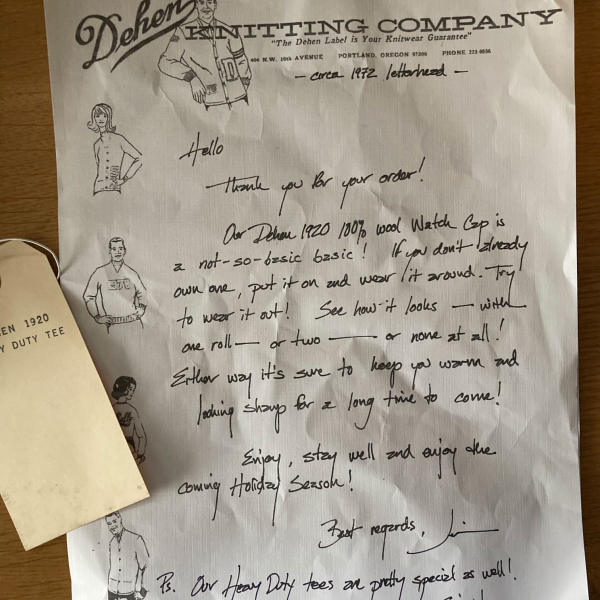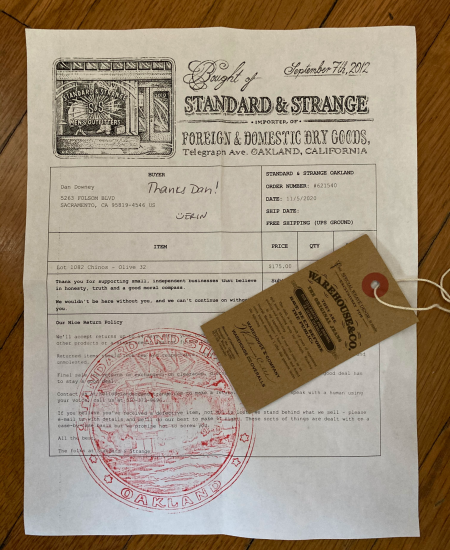Pure Style, to Scale
Some brands just have it. There’s a personal touch to a quality brands which does not go unnoticed. This touch lends credibility to brands, engenders feelings of partnership and belonging. This personal touch is not solely the domain of small business. You can scale personality in your brand. Failing to do so can be costly.
Retailers and specialty shops maintain unique connections with their customers. These connections engender brand loyalty and keep customers returning year after year. Retailers oriented in the “craft” apparel trade, in particular, create unique experiences, ones which value the customers’ personal taste and style. This value is conveyed, quite often, in personal messages from brand, social posts shouting out purchases or simple notes to customers letting them know how much they are appreciated. These touches, while seemingly insignificant, are the stuff that brands are built upon, the sort of interaction which creates loyalty and endures in a time of ephemera and fleeting fancy.
Achieving this sort of brand equity is manageable at a small scale, for a small retail or other operation. Owners, in these situations, are often order-fillers and customer-service representatives, all wrapped into one. This makes it easy for the core values, the voice and style, of a brand to shine through, because they are unique. It is the style of the owner. It is a personal message. It is the true voice and even hand of the owner. To do this for every customer is possible when the margins are wide enough and time management is not an issue. Small businesses can even retain and commit to this voice with a small and dedicated staff. Personal touches are not solely the realm of small business. Strategic implementation of voice and style guides can ensure consistent brand messages across a user experience, regardless of organization size. It doesn’t stop with the creation of a style guide.
Style guides are living documents, subjects of regular revision.
Consistent brand voice and messaging requires regular maintenance. Communications teams across the enterprise should all work from the same guide, be aware of objectives and directions, and have a regular means of checking their work. Style guides should not belong in the set-it and forget-it category.
Style guides are living documents, subjects of regular revision. The voice and tone of a company are as dynamic as the markets they inhabit. And, just as sales strategies are constantly scrutinized and revised, style guides require timely reviews, constant evaluation and a regular refresh. Style and voice guides should be as agile and responsive as the software and services they embody.
Having spent time with both small, agile businesses and working in large corporate settings, I can attest to the time and effort involved in reviewing copy across an enterprise. I was startled to discover, in starting a communication project with a decades old organization, that they had no enterprise style-guide to speak of. They maintained design documentation, with color and logo requirements, but no voice guidelines or copy specifics against which to measure their efforts. Teams across the enterprise, from public relations, to communications to sales and social media all wrote their own copy, maintained their own semblance of style and, essentially, “spoke” with their own voice. Deployment took weeks, for social media posts or simple email outreach, as review procedures ground efforts to a crawl as departments and teams attempted to present a cohesive message in the user experience.
Establishing voice charts and review protocols across your communication channels can ensure a consistent voice across the brand environment. Ensuring that your email and social communication teams understand and apply consistent voice is as easy as making sure they have a ready voice checklist applicable to their projects. Relaying voice and tone to your public relations team or your marketing department can be done as readily as sharing intranet files and scheduling regular content reviews and audits. Documenting user scenarios and journey maps, and correlating these experiences with a voice and style guide can create a consistent and enduring conversation between your individual user, your customer and your brand, regardless of scale. From 1,000 to 10,000,000 customers, you can create and maintain a unique brand voice with quality documentation and consistent and regular review.
Do you want your brand to have it, that personality and style of boutique brands? That unmistakable voice and style? Contract or hire a qualified content strategist and writer, someone with brand management and editorial capacity who can manage your voice, audit your existing content and ensure a lasting consistency which resonates with your audience through every brand interaction.



